political dissatisfaction and a move toward socialism. Editor's Note: Think Trump
2. Progressive Era 1856-1896
3. U.S. Terror/Anxiety Episodes Since 1900
Free Internet Library Improve Grades and Careers
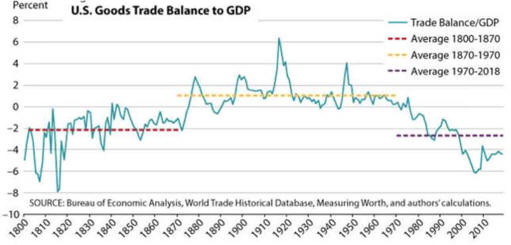 |
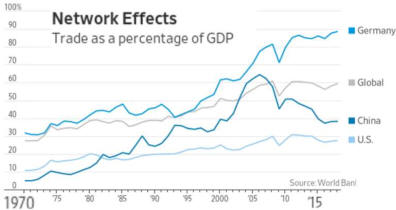 |
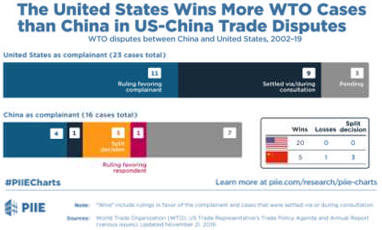 |
|
I. Introduction A. The United States is the largest exporter in the world. B. In 1991 exports amounted to $421 billion or 7.5% of GDP. C. About 20% of the economic growth which took place during the late 1980's and early 1990's occurred because of increased exports. D. Foreign nations tend to specialize in manufactured goods demanded by U.S. consumers because the U.S. is the largest wealthy mass consumer market in the world. E. The United States imports more than it exports and the resulting debt (cumulative deficit) is approaching one trillion dollars. This debt has provided foreigners with the dollars necessary to buy billions of dollars worth of U.S. real estate (especially in Hawaii and California), companies (especially new high-tech start-ups), and financial assets (stocks and bonds including U.S. Treasuries). F. Most economists feel free (of restrictions) international trade is of benefit to nations. Individuals within a nation may be hurt as foreign goods produced by foreign workers replace their domestic counterparts while politicians argue over the ramifications of allowing creative destruction to occur. political dissatisfaction and a move toward socialism. Editor's Note: Think Trump 2. Progressive Era 1856-1896 3. U.S. Terror/Anxiety Episodes Since 1900
Free Internet Library Improve Grades and Careers A. Absolute advantage exists when one nation can produce a good or service more economically than another. B. In the example below, the United States has an absolute advantage over Canada in the production of both computers (2 hours < 3 hours) and shirts (4 hours < 5).
C. Comparative advantage exists when one nation has a lower
opportunity cost than another in the production 1. Constant opportunity costs will result in the linear production possibility frontiers (PPF) depicted below.
2. The opportunity cost of an item on the
x-axis (shirts) is measured by the absolute value of the PPF's |
|
||||||||||||||||||
|
silk road, trade routes across Eurasia from Wiki
|
|||||||||||||||||||
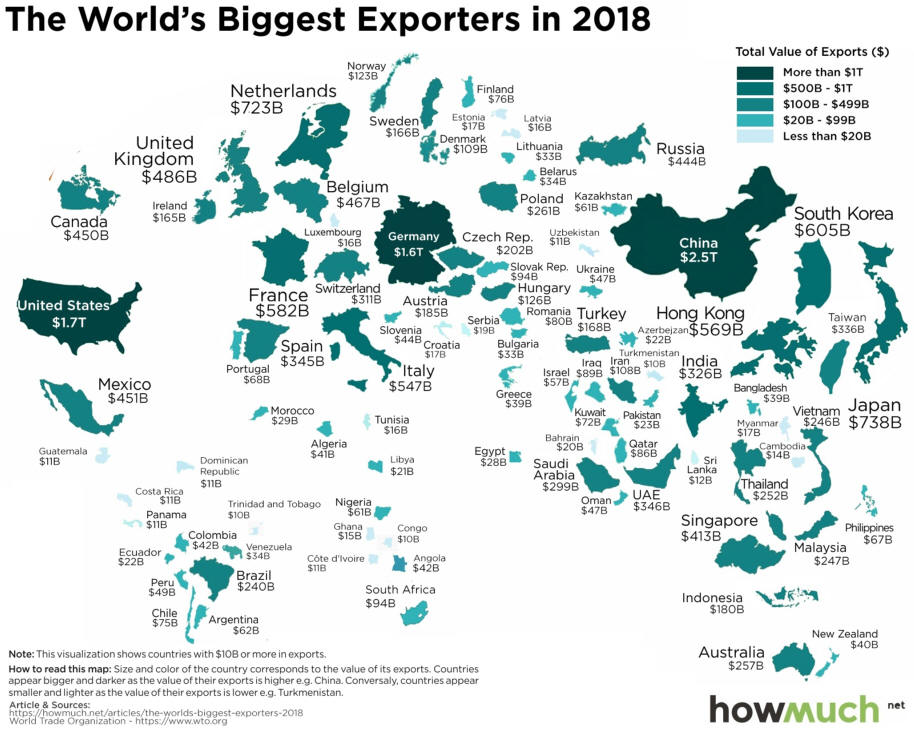 |
|||||||||||||||||||
|
III. International specialization increases economic growth.
A. Assume the world has enough shirts, and gains from international specialization will be directed toward B. Canada, which has a comparative advantage in shirts, will produce only shirts.
C. The United States will produce enough shirts to keep total
production at 162 shirts and devote the rest of her D. Specialization and gains from Trade KHAN ACADEMY |
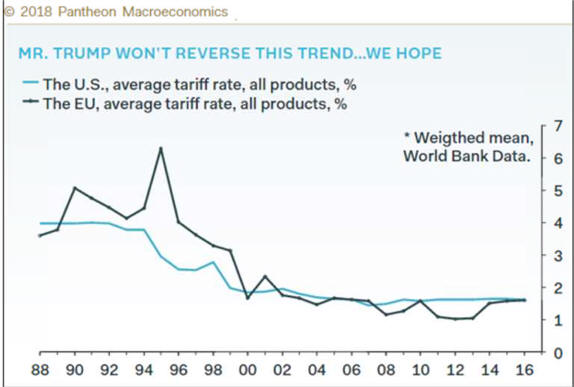 |
|
Original Production (half time spent on each) |
After Specialization |
|||
|
Computers Shirts |
Shirts |
Computers |
||
|
U.S. |
600/2 = 300 |
600/4 = 150 |
(162-24) =138 shirts 138 x 4 = 552 hours |
1200 - 552 = 648 hours 648/2 = 324 |
|
Canada |
60/3 = 20 |
60/5= 12 |
120/5 = 24 |
0 |
|
Total |
320 |
162 |
162 |
324 |
|
1. Canada will produce 24 shirts (120 hrs / 5 hrs per shirt). 2. United States shirt production will be 138 (162-24), 12 less than before specialization and trade. 3. Net gain for the world is 4 computers. D. Comparative Advantage and Trade from Jay Kaplan of the University of Colorado at Boulder is a more in depth presentation. E. Consumer's and Producer's Surplus and Tariffs and Quotas Video from ACDC Economics
IV. Factors limiting international trade
E.
Videos from ACDC Economics V. Basic Theory Video Lectures VI. Other Theories VII. More Internet Information A. Public Citizen | NAFTA - North America Free Trade Agreement has a liberal against NAFTA view. B. NAFTA results lead to more free trade agreements, opportunities has the conservative pro NAFTA view. C. The International Study Center from Professor Steve Suranovic of George Washington University has substantial information. D. Free Trade Doesn't Work book review E. Germany’s path to growth: exports from tradereform.org F. International Trade Lecture Notes from David Latzko of Penn State University G. Only the Weak Survive import/export imbalances Nouriel Roubini, Project Syndicate (hat tip Mark Thoma) H. Bernanke Translated WSJ, 11/18/10 I . 2012 AP Econ Videos- You Can't Protect This J. More evidence that U.S. trade deal are really Offshoring deals 8/25/14 K. Lessons About International Trade For Donald Trump From Milton Friedman and Henry George L. Pacific Partnership Currency Manipulation Trade and Jobs shows a large loss of jobs with not attempt to quantify their value added (wage). 3/3/16 m. Who Wins When the US Dollar Falls? NY Times
|
||||
| Last Chapter | Visit Business Education Bookstore |
| Class Discussion Questions | Table of Contents |
| Homework Questions | Economics Free Stuff |